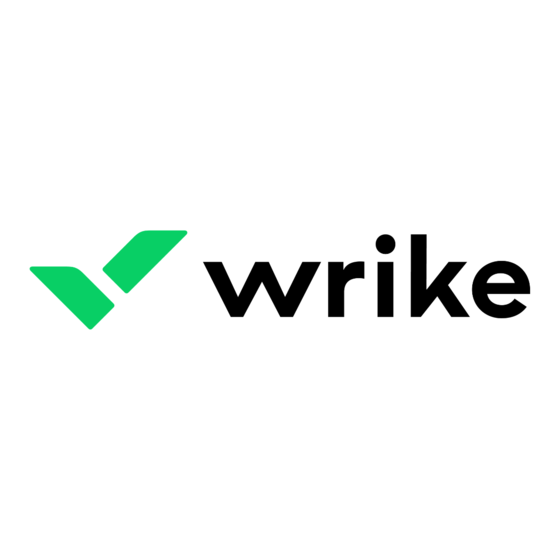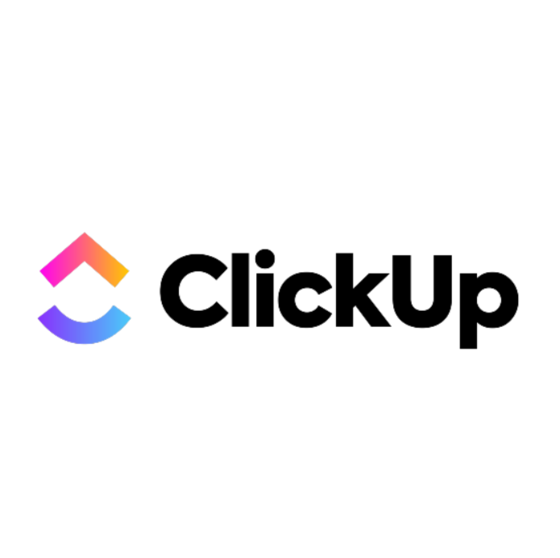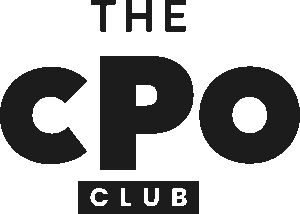

Wrike vs. ClickUp: Comparison & Expert Reviews For 2025
Wrike and ClickUp are two leading project management platforms designed to help teams collaborate efficiently, manage complex workflows, and stay aligned on goals. While both support cross-functional work, they cater to different priorities: Wrike excels in structured task management, timeline planning, and enterprise-level visibility, making it ideal for managing large-scale projects. ClickUp, on the other hand, offers an all-in-one workspace with customizable views, documents, and goal tracking—perfect for teams seeking flexibility and centralization.
Their strengths emerge in different scenarios. Wrike is built for organizations that need robust reporting, resource management, and scalable project governance. ClickUp thrives with teams that want to unify tasks, docs, and communication in a highly adaptable interface.
In this guide, we’ll compare Wrike and ClickUp, a popular alternative, across features, security, integrations, and pricing—so you can select the platform that best aligns with your team’s workflow and objectives.
Wrike vs. ClickUp: An Overview
ClickUp
Visit ClickUpOpens new windowWhy Trust Our Software Reviews
Wrike vs. ClickUp Pricing Comparison
| Wrike | ClickUp | |
|---|---|---|
| Free Trial | Free plan available | Free plan available |
| Pricing | From $10/user/month (billed annually) | From $7/user/month (billed annually) |
Get free help from our project management software advisors to find your match.
Get Expert AdviceOpens new windowWrike vs. ClickUp Pricing & Hidden Costs
Wrike and ClickUp both use tiered pricing models, but the real difference shows up in how features scale with your team. Wrike’s plans are structured around user roles and project complexity—larger teams or those needing advanced analytics, dashboards, or cross-departmental workflows may run into added costs for features like time tracking or increased storage. ClickUp pricing, while flexible and competitive upfront, can introduce extra charges through add-ons like automation, goal tracking, or white labeling, especially as your workspace grows.
If you're deciding between the two, it’s worth mapping out which project management features you’ll actually use, and what those might cost over time. Look closely at what’s included in the base tier, what’s paywalled, and whether the platform can scale with your team without adding friction or cost creep.
Wrike vs. ClickUp Integrations
| Integration | Wrike | ClickUp |
|---|---|---|
| Dropbox | ✅ | ✅ |
| Figma | ✅ | ✅ |
| GitHub | ✅ | ✅ |
| Slack | ✅ | ✅ |
| Google Calendar | ✅ | ✅ |
| Microsoft Teams | ✅ | ✅ |
| Outlook | ✅ | ✅ |
| HubSpot | ✅ | ✅ |
| API | ✅ | ✅ |
| Zapier | ✅ | ✅ |
| Jira | ✅ | ✅ |
Both Wrike and ClickUp support popular integrations like Slack and Figma, giving teams flexibility to adapt workflows across departments. With Slack, either tool can keep conversations connected to project progress—helpful for reducing context-switching, especially in remote or hybrid setups. Figma embeds work similarly in both platforms, enabling design teams to share prototypes or visual assets directly within tasks. The difference comes down to how your team uses these tools: Wrike is often favored for structured, cross-team communication and coordination, while ClickUp offers more flexibility for creative teams who want everything—tasks, visuals, and feedback—in one customizable workspace.
Wrike vs. ClickUp Security, Compliance & Reliability
| Factor | Wrike | ClickUp |
|---|---|---|
| Data Encryption | Wrike encrypts data at rest and in transit using AES-256 encryption. | ClickUp secures data with AES-256 encryption both at rest and in transit. |
| Regulatory Compliance | Wrike complies with GDPR and SOC 2 standards for data protection. | ClickUp maintains compliance with GDPR and CCPA regulations. |
| Reliability | Wrike offers a 99.9% uptime guarantee backed by a robust infrastructure. | ClickUp commits to a 99.99% uptime with a reliable cloud-based system. |
Both Wrike and ClickUp deliver strong security foundations with AES-256 encryption, GDPR compliance, and reliable uptime guarantees, which are important for any team handling sensitive project data. But if your organization has stricter regulatory requirements, Wrike’s broader compliance coverage, including SOC 2 Type II, may offer added peace of mind, especially for enterprises managing complex projects across departments.
When choosing between these two project management solutions, it’s worth considering not just their feature set but also how their security practices align with your internal policies, permissions, and the expectations of your team members and stakeholders. Whether you're focused on data protection, usability, or long-term scalability, evaluating compliance should be part of your wider decision-making, not separate from it.
Wrike vs. ClickUp Ease of Use
| Factor | Wrike | ClickUp |
|---|---|---|
| User Interface | Wrike’s interface is clean and user friendly, with a focus on structured navigation and core project planning tools. | ClickUp offers a flexible interface with broad customization options, which can be overwhelming for new users. |
| Onboarding Experience | Wrike provides guided tutorials and walkthroughs to help team members get started quickly. | ClickUp’s onboarding includes video tutorials and docs, but the range of functionality can make the process feel complex. |
| Setup | Wrike’s setup is straightforward, using predefined templates and ready-made statuses for quick launches. | ClickUp allows deep customization with custom fields and subtasks, which offers flexibility but can slow setup. |
| Support | Wrike offers 24/7 customer support through live chat and email, ideal for global teams. | ClickUp provides email support and a community forum, with more resources available on higher plans. |
Wrike is easy to navigate with its structured setup, but its simplicity might limit customization for some teams. ClickUp excels in customization, allowing teams to tailor their experience, but this can also lead to a steeper learning curve and initial complexity.
Wrike vs ClickUp: Pros & Cons
Wrike
- Time tracking: The software’s built-in time tracking capabilities allow teams to log hours worked on tasks and monitor productivity.
- Custom workflows: Users can build custom workflows and approval processes to standardize work and ensure consistency.
- Gantt charts: Wrike's interactive Gantt charts provide a visual timeline of tasks and dependencies to track progress.
- Mobile app: The mobile app has limited functionality compared to the web version and can be slow or buggy.
- Notifications: The high volume of notifications and updates can be overwhelming and difficult to manage.
- Learning curve: Wrike's extensive features and customization options can take time to fully learn and configure.
ClickUp
- Robust Collaboration Tools: The software offers a wide range of collaboration tools, including comments, mentions, and checklists, to ensure team members can communicate and collaborate effectively, assign tasks, set deadlines, and track progress.
- User-Friendly Interface: ClickUp has a simple and intuitive interface that makes it easy for users to navigate and manage tasks effectively, providing a clean, organized dashboard that displays all tasks and projects in one place.
- Customizable Workflows: ClickUp provides a highly customizable interface that allows you to create and tailor workflows to suit your team's needs, ensuring optimized processes and reduced chances of errors or miscommunication.
- Complex Pricing Structure: ClickUp’s pricing structure is complicated, with different features available at various levels. This can make it difficult to determine which plan is right for your business and potentially lead to you paying for features you don’t need.
- Limited Mobile App Functionality: The mobile app has limited functionality compared to the desktop version, and some features may not be available on mobile devices. This can be a drawback for users who need to manage tasks on the go.
- Steep Learning Curve: ClickUp has many features and customizable options, which can make it overwhelming for new users. This can also impact the time it takes for some users to get used to the platform and navigate it effectively.
Who Should Use Wrike, and Who Should Use ClickUp?
In my opinion, Wrike is a better fit for larger organizations or teams that need structured, compliance-ready project management software with scalable resource and workload management. It’s especially useful in industries where security and audit trails matter, and where teams benefit from built-in Gantt charts, detailed permissions, and automated notifications to manage complex timelines. Wrike’s emphasis on structure also makes it easier to onboard new team members and maintain consistency across departments, ideal for more traditional or regulated workflows.
ClickUp, meanwhile, is better suited for startups, agencies, or creative teams that prioritize flexibility and a wide range of features. Its support for kanban boards, custom fields, and visual tools like whiteboards and proofing make it appealing to teams that value iterative feedback and highly tailored workflows. ClickUp also offers a generous free plan, making it accessible for smaller teams just getting started. If your use case leans toward agile collaboration, file sharing, and mobile access across Android or desktop, ClickUp might be the more adaptable solution, provided your team is willing to invest in initial setup and configuration.
Differences Between Wrike and ClickUp
| Wrike | ClickUp | |
|---|---|---|
| Automation | Wrike provides basic automation to streamline repetitive tasks. | ClickUp offers advanced automations with extensive customization. |
| Compliance | Wrike complies with GDPR and SOC 2, making it suitable for enterprises. | ClickUp complies with GDPR and CCPA, focusing on data protection. |
| Integrations | Wrike integrates well with project management and communication tools like Slack. | ClickUp offers extensive collaboration features through integration with popular creative tools like Figma and GitHub. |
| Pricing | Wrike uses a tiered subscription with additional costs for features. | ClickUp offers a tiered model with a variety of add-ons. |
| User Interface | Wrike’s interface is clean and structured for easy navigation. | ClickUp’s interface is highly customizable, which can be complex. |
| Visit WrikeOpens new window | Visit ClickUpOpens new window |
Similarities Between Wrike and ClickUp
| Collaboration | Each provides collaboration tools like comments and shared dashboards, helping your team stay connected and informed. |
|---|---|
| Mobile Usability | Wrike and ClickUp both offer mobile apps, ensuring that your team can manage projects on the go, anytime and anywhere. |
| Reporting | Both platforms include reporting tools that provide insights into project progress and team performance, aiding in decision-making. |
| Scalability | Wrike and ClickUp are designed to scale with your team's growth, offering plans that cater to small teams and large enterprises alike. |
| Task Management | Both Wrike and ClickUp offer detailed task management features to track progress efficiently, allowing your team to assign, track, and prioritize tasks effectively. |
| Visit WrikeOpens new window Visit ClickUpOpens new window | |












